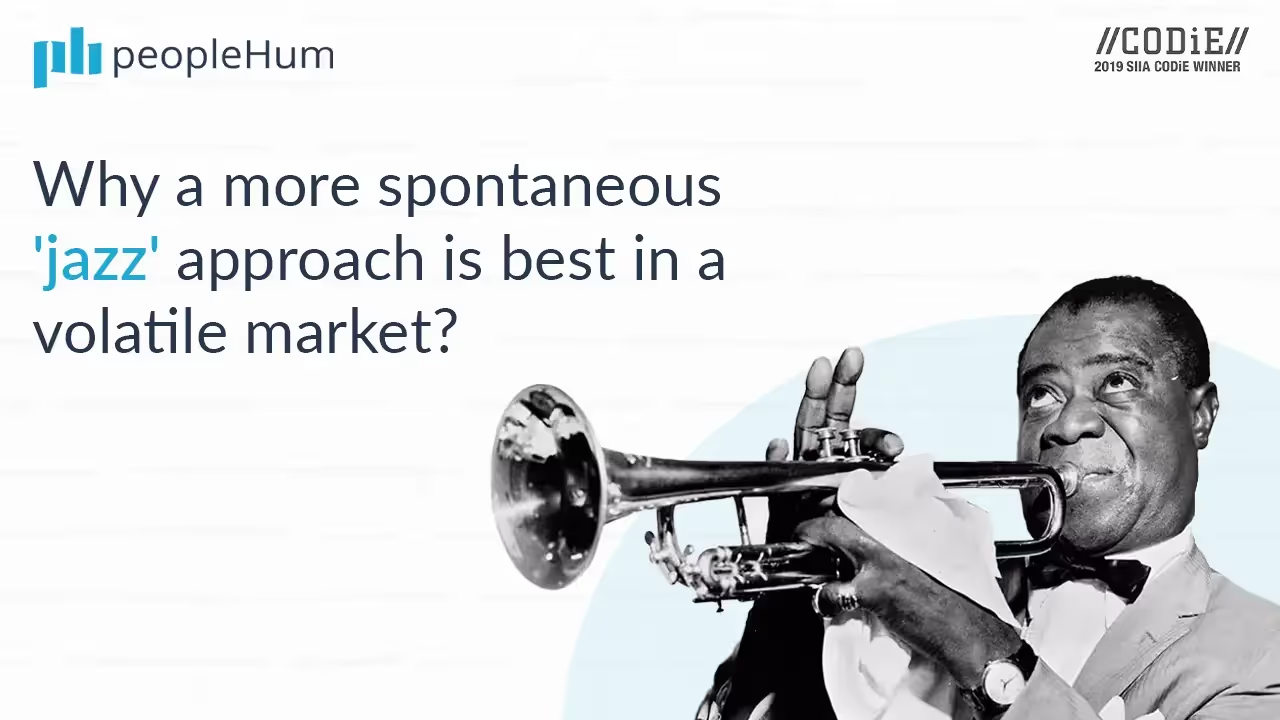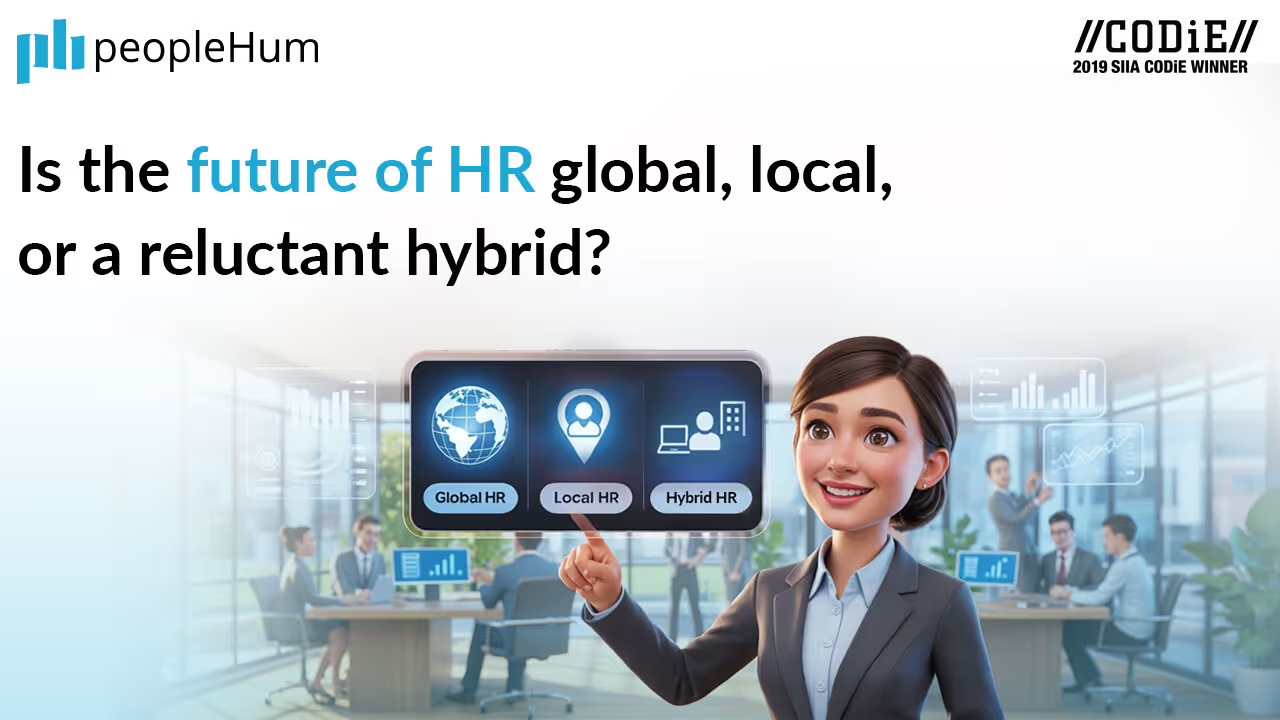Running a company is a bit like leading an orchestra or band. Each musician needs to know what notes they’re supposed to be hitting to create a harmonious sound. In today’s unpredictable environment, organisations would do well, however, to ditch the ‘top down’ classical orchestra set up and instead adopt the more spontaneous approach of a jazz band.
It’s no secret that the events of 2020 have turned the world of work on its head. Adaptability is now the key strategic driver for organisations looking to survive and thrive. There is a growing divide between organisations that can adapt quickly to uncertainty and change and those that can’t.
When it comes to your learning and people management strategy, there is no point in long-term planning anymore.
Back in the 1980s, my musical interests ranged from classical, jazz and the newly mainstream electronic sound of the time. Some weeks, you’d find me playing in an orchestra, while evenings were spent with a small Dixieland jazz band touring the pubs of South London, listening to the likes of Depeche Mode or Fad Gadget on my new-fangled Sony Walkman on the bus between gigs. Reflecting on this experience alongside the seismic shifts we are all sharing today made me think about how the organisation of music can inform the workplace.
Consider classical music for a moment. The composer carefully lays out clear instructions for each instrument with room for interpretation lying in the margins – the gaps between the notes, if you will. With an orchestra, a conductor defines that interpretation and expects accurate and compliant behaviour from all.
The typical organisation of today operates along similar lines. We place high expectations on a small number of leaders who set a strategy that demands compliance in order to be efficiently delivered. If we hit something unexpected, however, this places a lot of pressure on the organisation as highly tuned, yet rigid, ways of working begin to break.
Jazz, on the other hand, has different expectations. Each individual operates with the freedom to interpret, to lead, to follow, operating within a looser set of shared guidelines. Trust and interdependence are assumed. When one member takes things in a slightly unexpected direction, the rest of the band can adapt and follow. The music flows on.
An organisation that sets a clear mission and purpose, while allowing its people the autonomy and psychological safety to innovate, challenge, lead and follow as required, introduces flexibility and resilience in the face of uncertainty and rapid change. So, what steps can an organisation take to jazz things up?
Switch from long-term to short-term planning
When it comes to your learning and people management strategy, there is no point in long-term planning anymore. Instead, smart organisations are planning little and often, working out of ‘living documents’ and making full use of contingency plans.
This covers everything from your learning programme to your people management strategy. For instance, instead of planning a dedicated annual training workshop, consider switching to shorter, more targeted learning modules, or a flexible learning programme that employees can dip in and out of over time.
Equally, the traditional annual appraisal will no longer cut it – instead, switching to continuous performance management and regular check-ins means that your people can perform in a more agile way, and managers can work with their employees to change direction when it really matters, much like a jazz ensemble improvising live on stage.
Cutting your red tape - simplify
In virtually every organisation, employees have to jump through hoops or take shortcuts to circumvent certain lengthy processes. This is particularly true when your people want to develop in their roles. For instance, training programmes may require approval from multiple managers, or scheduling conflicts may hinder training efforts, and therefore, progress towards an employee’s career goal.
Instead of acting like the conductor of a classical orchestra, you should be giving your people the freedom to act independently by lowering the barriers to learning. Think about enabling self-enrolment in courses, or making the switch to informal learning. With a learning experience platform, your people can connect to the information they need much more easily and efficiently, allowing employees to identify experts, share knowledge, canvas opinions and reflect on previous discussions.
Procuring technology wisely
Virtually every organisation knows all too well the pitfalls of making unwise technology procurement decisions. You can easily end up getting locked into long-term, expensive contracts, and be stuck with systems that are simply not fit for purpose. Rigid proprietary systems are a hindrance in the new world of work, while open, flexible systems will grow and adapt with you over the unpredictable weeks, months and years. To make wiser procurement decisions, there are five key things to bear in mind:
1. Don’t get into ‘feature shoot-outs’ between vendors
Vendor X may offer a certain number of features, while Vendor Y offers half that number. Equally, Vendor X may offer one compelling must-have feature that Vendor Y doesn’t. Don’t get bogged down in these feature shoot-outs – instead, look at which vendor has the flexibility to evolve with your needs over time. After all, the features you need today are highly unlikely to be the same as the features you will need next year.
2. Build a suitable support package
What matters to you? Is it round-the-clock assistance, a local provider, hosting support or unlimited technical training? Your support package can completely transform your technology experience, so be sure to negotiate the right level of support to keep your system up and running smoothly.
3. Consider the total cost of ownership (TCO), not just the upfront cost
A compelling initial discount may sway your decision, but does this come with expensive hosting, maintenance and customisations down the line? Don’t just look at the price you pay initially, instead, consider your entire TCO, which will better reflect everything that goes into making your solution functional.
4. Run a paid-for discovery phase
Instead of inviting dozens of vendors to submit proposals, consider conducting your initial research and then selecting a small number of vendors to undertake a paid assignment to develop a full understanding of how they will meet your needs. This upfront investment will actually help you save money by avoiding a long, drawn-out RFP process, and will help match you with the right vendor.
5. Learn from others
Your people management needs are very rarely entirely unique, and others in your industry are likely facing similar challenges. Approach others in your network to discover which systems worked for them, which didn’t and how they built a successful solution.
Adapt or get left behind
These are just a few of the steps you can take to jazz up your organisation. The future is uncertain, however by exercising our ability to improvise, adapt and simply be more comfortable with multiple changes of direction in quick succession, we will find ourselves in a far more resilient place.
Uncertainty doesn’t have to be stressful or dysfunctional as long as you embrace it. Put flexibility above efficiency throughout your organisation. Consciously nurture a culture and skills set that feels safe with change. That’s the right note to hit for the new world of work ahead.
About the author
Perry Timms is the Founder & Chief Energy Officer of PTHR, with 30+ yrs experience in people, learning, technology, organisation change & transformation. His personal mission is to see more people flourish through their work, and help shift organizations as a force for societal good (not just profit machines). PTHR's mission is defined as "Better Business for a Better World". In October 2017, his first book, Transformational HR - was published by Kogan Page and the Energized Workplace published in August 2020. He was an extremely proud new entrant to the list of HR Most Influential Thinkers for 2017 and again in 2018 + 2019 (in the top 10 both years).




































%20Medium.avif)
%20(1).avif)












